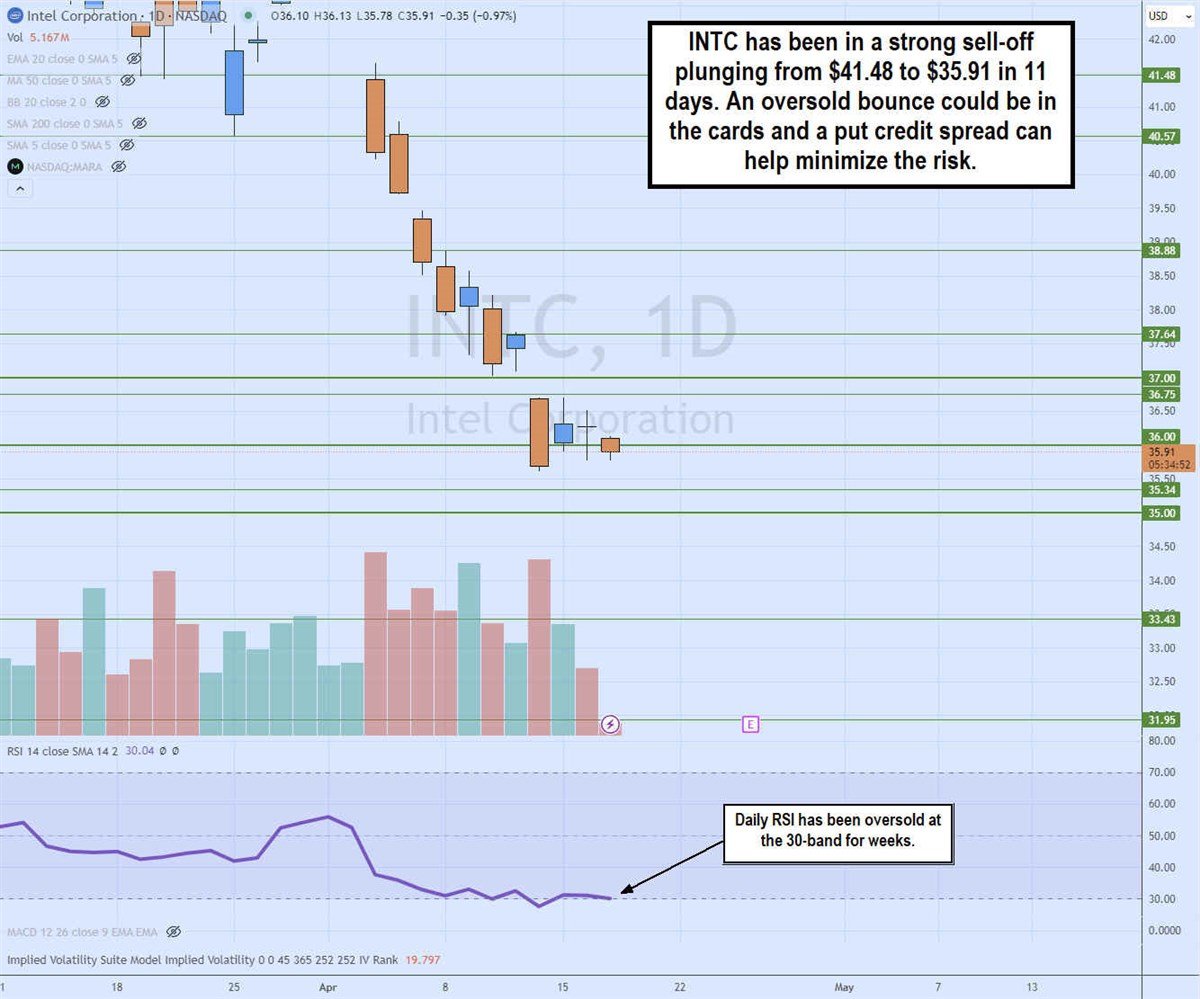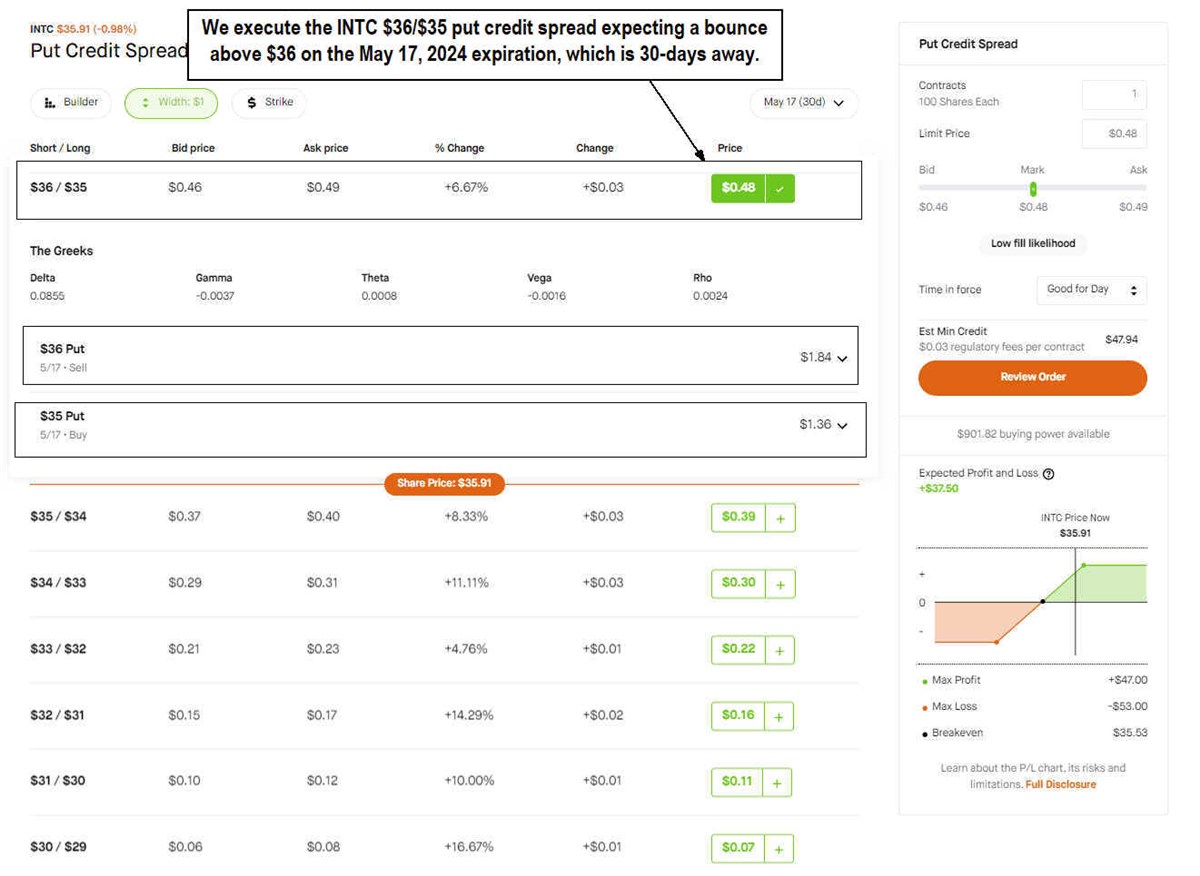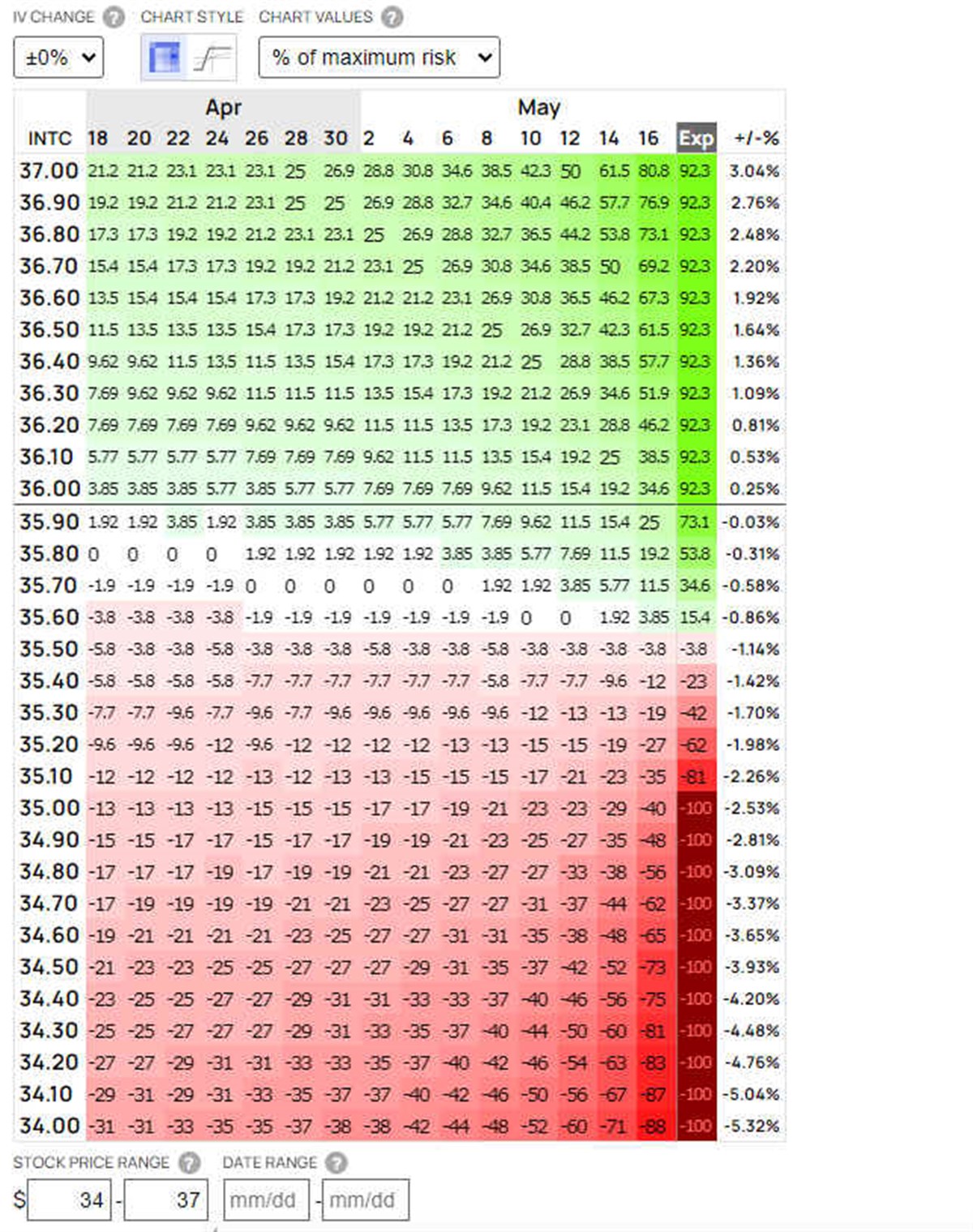
Key points
- A put credit spread is an options strategy that can be implemented when a stock is expected to rise.
- The maximum profit and maximum loss are limited and you receive the maximum profit up front in the form of credit.
- A put credit spread comprises 2 legs or trades: a short put followed by a long put at a lower strike price, with both contracts having the same expiration.
- 5 stocks we prefer to Intel’s
In last week’s stock options article, we looked at the pros and cons of debt spreads. When you believe a stock is going up but want to limit downside risk and are willing to limit upside gains to spend less on the trade, then a call debit spread may be a viable choice. Likewise, you may also want to consider a credit spread. This is similar to the debit spread but also very different in mechanics. In this article we will look at the pros and cons of a put credit spread strategy.
What is a Put Credit Spread?
A put credit spread is also called a bull spread or put spread. A put credit spread strategy can be used when you believe a stock will rise. Just like a debt spread, it limits downside risk and limits upside gains. The main difference is that it pays you the maximum profit in the form of credit upfront and uses the put option instead of call options.
A put credit spread is a multi-leg trade where you sell/short 1 higher in-the-money (ITM) strike put and buy a lower out-of-the-money (OTM) put.
For example, you sell 1 ABC Put at a strike price of $50 and buy 1 ABC Put at a strike price of $45. This should earn you a credit, which will be paid to you up front. A credit spread takes advantage of time decay (Theta), which is your friend. This is the opposite of the debit spread, where Theta is the value you lose each day by holding the position.
Example of Put Credit Spread with INTC
Using a familiar example with the IT and technology giant Intel Co. NASDAQ: INTC.

The daily candlestick chart of INTC is not very pretty. Over the past 11 days, it has fallen from the $41.48 level to $35.91. The daily relative strength index (RSI) is oversold in the 30 band.
Trade execution
Suppose we are semi-bullish and expect INTC to recover, especially after such an extreme sell-off. INTC shares are currently trading at $35.91. Let’s assume INTC climbs back up to $36, just 9 cents away by May 17, 2024. The expiration, which is 30 days away, provides a significant time premium.

To place the trade, we select the INTC $36/$35 put credit spread for 48 cents. This includes selling/shorting the $36 OTM put at $1.84 and buying the $35 put at $1.36. We receive a credit from the short put and use it to pay for the long put. There remains a residual credit of 48 cents, which is paid to us. This is the maximum profit on the trade paid up front.
The potential outcome
At expiration, there are 3 potential outcomes.

THE break-even price on trade is $36.50 for INTC.
The maximum loss is $53, which is the credit and commissions paid when you executed the trade if INTC closes below the $35 strike price.
The maximum profit is $48 credit received upon trade execution if INTC closes above strike price of $36.00.
Of course, you are not obligated to hold the position until expiration, but remember that theta is on your side. This means you earn more if you hold longer than a debt spread where every day you hold suffers from time decay.
The pros and cons of credit spreads
Here are the potential benefits and pitfalls of trading credit spreads.
The pros are:
- Get paid up front with a credit. Selling an ITM put option provides you with a credit that is used to pay for the OTM put option, leaving you with a maximum profit premium paid up front.
- Take advantage of the high implied volatility (IV). When IV is high, you can take advantage of this by becoming a premium net seller to receive credit.
- Quantify and minimize downside risk. Both upside and downside risk are measured and limited in this strategy.
The cons are:
- The maximum profit potential is limited and is less than the maximum profit. In exchange for receiving a prepaid credit, you will earn a little less than your maximum loss.
- The maximum loss is still 100% of the investment. If the stock falls below the lowest put strike price, you lose your entire credit and fees, which are slightly higher than your maximum profit.
Scratch the itch
Put credit spreads are ideal during periods of high volatility, which increase the IV. Options tend to be “expensive” during these times. This allows net sellers to take advantage of high rewards and receive credits. If the IV is still high, you can also continue the operation to continue collecting rewards. Keep in mind that Theta erodes fastest one week after expiration.
Before considering Intel, you’ll want to hear this.
MarketBeat tracks daily Wall Street’s highest-rated and best-performing research analysts and the stocks they recommend to their clients. MarketBeat identified the five stocks that top analysts are quietly whispering to their clients to buy now before the broader market takes hold… and Intel wasn’t on the list.
While Intel currently has a “Hold” rating among analysts, top-rated analysts believe these five stocks are better buys.
View the five stocks here
Wondering what the next big-hitting stocks with solid fundamentals will be? Click the link below to learn more about how your portfolio could blossom.
Get this free report